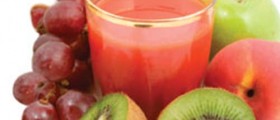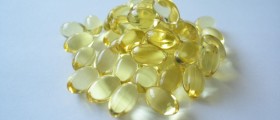
Vitamin A, also known as retinol, is a vitamin that plays an important in the optimum functioning of the body, especially the eye. This vitamin is needed by the retina and essential for scotopic and color vision. It is also important in development of bone tissue, cell division and differentiation.
Recommended dietary allowance for vitamin A
Recommended daily value for vitamin A depends on many factors of which age and gender play the important role. Pregnant and breastfeeding women are at a higher demand for this vitamin. Pregnant women will need at least 2500 IU per day, while the lactating women need as much as 4.000 IU per day.
Children up to three years old require around 1.000 IU of vitamin A, children from 4 to 8 years old need somewhere around 1.330 IU, while youngsters from 9 to 13 years of age need 2.000 IU of vitamin A.
The recommended dietary allowance for teenagers and adults is approximately 3.000 IU for males and 2.330 for females.
Sources of vitamin A
Vitamin A comes from various sources. The most common sources of vitamin A are retinol and beta-carotene. Another name for retinol is “the true vitamin A” because it comes in such a pure form that body may process it almost instantly. Beta-carotene is a precursor for vitamin A. Body converts beta-carotene into retinol before the use. The richest sources of beta-carotene are different green leafy vegetables, carrots, sweet potatoes, mango and kale.Dietary sources of vitamin A
Vitamin A is better absorbed from animal sources than from vegetable sources. Most of the American population gets the sufficient amounts of this vitamin from the regular diet. Normally, people are getting more than twice of recommended dietary allowance for vitamin A. Here is the list of most commonly used sources of vitamin A:Cooked beef liver, 3 ounces =27,185 IU (international unit) of vitamin A, enough to satisfy 545% of daily-recommended value (RDV)Cooked chicken liver, 3 ounces = 12, 325 IU of vitamin A, enough to satisfy 245% of RDVFortified skim milk, 1 cup = 500 IU of vitamin A, enough to satisfy 10% of RDVCheddar cheese, 1 ounce = 284 IU of vitamin A, enough to satisfy 6% of RDVWhole egg, 1 medium = 280 IU of vitamin A, enough to satisfy 6% of RDVWhole milk (3.25% fat), 1 cup = 249 IU of vitamin A, enough to satisfy 5% of RDVHypervitaminosis A
Hypervitaminosis may occur as the effect of excessive intake of vitamin A. Being that deficiency in this vitamin is extremely rare, hypervitaminosis occurs more frequently and mainly in people that are already taking other food supplements. Signs and symptoms of hypervitaminosis include nausea, vomiting, problems with vision and loss of muscular coordination.
The effects vary from mild to severe and include excessive dryness or peeling of the skin, skin discoloration (orange color on the palms), birth defects, hair loss, and growth retardation.

















Your thoughts on this
Loading...